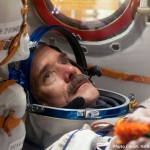
By Jae-Ha Kim
Chicago Sun-Times
September 15, 2000
![]()
Heliograph Productions presents a film directed by John Weiley.
Running time: 40 minutes.
No MPAA rating (suitable for general audiences).
Opening today at the Museum of Science and Industry’s Omnimax Theater.
As Galileo Galilei once described it, the sun is as spotty as a teenager. And the general audience gets a chance to see the sun in all its magnificence and fury in “Solarmax”–the latest giant-screen IMAX film to screen at the Museum of Science and Industry’s Omnimax Theater.
Some 93 million miles away from Earth, the sun has been both deified and simplified as a cheery, yellow smiley face. In “Solarmax”–which uses large-format film cameras and computer data to generate a “you are there” feeling–the sun is shown as an inferno.
Every 11 years, the sun’s poles reverse with violent force. The peak of the storm is called the solarmax–the last of which took place in 1989. Camera crews trekked to Aruba, Peru, England, Norway, Poland, Antarctica, Greenland, Australia, Spain, Japan and the United States to capture never-before-seen footage of this phenomenon.
“Solarmax” is an impressive documentation of the sun that allows audiences to explore its massive history. But the film also has a science class feel that makes the film seem longer than its 40-minute run time. Add to that music that is foreboding and often much too loud, and audience members get the feeling that the filmmakers are manipulating us into being impressed by the footage we’re seeing.
The fact is, the shots of the astronauts floating through space speak for themselves. So, too, does the footage of NASA’s solar-powered Pathfinder aircraft soaring some 80,000 feet into the sky. And the overhead shot of 15,000 acres of forest land preserved to honor Japan’s sun goddess is breathtaking.
Nicely narrated by Alex Scott, the film works best when it delves into the history of the solar system. You’ve got to love Nicolaus Copernicus for bucking common belief and developing the theory that the Earth rotates daily on its axis and revolves yearly around the sun. Never mind that the threat of torture and death forced him to recant during the Inquisition.
Copernicus still got the ball rolling for understanding the “great engine of life.”





